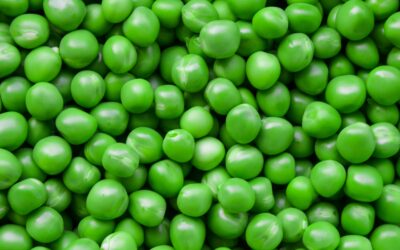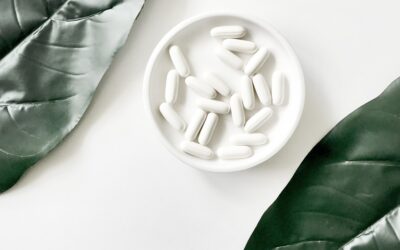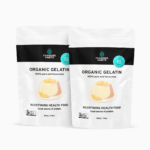Let’s talk milk and all things dairy and non-dairy. But before I start, I want you to know that I believe moo dairy is, inherently, a great food for humans – it’s what we’ve done to this food that is the problem.
For many, many years, ancient tribes (think Himba, Maasai and Kyrgyz) have had a herd of animals that produce milk. They milk those animals daily and there is no pasteurisation, homogenisation and/or fortification of this milk. It may be fermented, skimmed for cream and butter or soured to make cheeses, kefirs and yogurts.
In further reaches of the world, and not that long ago, many people had a family cow or goat that was milked and used for the family. When I was in my teen years (1970’s) I would visit a family every school holidays who had a family cow and fresh cream, milk and butter were part of the daily diet.
The story is very different in the Western world today, where dairy is collected by a co-op and many farmers’ herds contribute to your one glass of milk. Farmers are also different in their approach to their livestock when it comes to animal husbandry and pasture methods. Some may spray their lands with herbicides and insecticides while others may use holistic farming techniques. Many dairy farmers grass feed their cows, but about 20% of the diet (when they are being milked) will be grain – this is to keep the animals happy and complacent when being milked or before milking.
Animal husbandry will also differ from farmer to farmer, some using antibiotics for mastitis or other infections. Tick prevention or eradication may also be necessary in some milking areas and worming will probably be par for the course. As you know, the chemicals in the grain feed, in the drugs and those sprayed on the ground will all transfer into the milk.
The tanker arrives at the first destination, then the next farmer and so on until all the milk is collected. This is then mixed in the tanker due to the movement. Each tanker then arrives at its destination, spilling the milk into large vats ready for processing.
In one glass of milk you could have 1000’s of cows that have contributed to it.
Then the processing starts: Pasteurisation (this has changed in modern times, causing protein damage), homogenisation, skimming, trimming, revving, shaping (these terms taken from common milks on the shelf). Then it’s fortified with less-than-desirable nutrients, and I’ve even seen omega 3 in the mix. Permeates may also be added.
What’s taken out of the milk may be used for baby formulas, whey protein products or other ‘value-added’ foods. So while the good stuff might be taken out of your milk, your milk will then have other things added back into it. It’s a crazy system that is more about money than the health of humans. In other words, it becomes a product that is manipulated and changed.
This whole process is not just about milk: Cream is no longer cream, but rather has thickeners and gelatin; cheeses are no longer made the old-fashioned way; yogurt isn’t just milk and cultures but is often made with thickeners and binders and flavours. By now I’m sure you get the picture.
No longer are our dairy products old-fashioned but something that has been manipulated from the ground/grass up. These are the dairy products that I do not recommend.
Another important issue to consider is the debate about A1 and A2 milk. What does that mean? Originally all bovine beta-casein was A2 – goat, sheep, buffalo, camel, cow and humans, they all produce A2 type milk. Many of the cows used in the dairy industry today, however, are A1 type beta-casein.
When A1 beta-casein is digested it releases the peptide beta-casomorphin-7 (BCM7). This peptide has opioid characteristics. A1 beta-casein has been implicated in an array of health conditions including heart disease, type 1 diabetes, mental health conditions, behaviour issues, child development issues, sudden infant death syndrome and milk intolerances. Recent research shows that, in comparison to A2 milk, A1 inhibits gastric transit time. Many of the studies are by association but there are a growing number of studies that implicate the production of an inflammatory enzyme in the gut with the ingestion of A1 milk. There is a shift toward changing the cow population back to A2. So when you are looking for milk, look for the A2 milk, but be aware that this can also be processed.
I believe the growing number of dairy allergies and sensitivities is due to the manipulation of our dairy and animal husbandry,as well as a poorly-functioning gut and immune system. One study out of Vienna has shown that one of the major allergens in milk, beta-lactoglobulin, when loaded with the mineral iron is not an allergen, but without the iron it becomes an allergen. That statement is worth reading again. The researchers’ theory is that the iron loading of the protein may have something to do with the manner of how cows are kept and fed. In other words, iron loading depends on whether the milk is produced conventionally or using the principles of organic husbandry. When farmers use the principles of organic and natural cow raising, the iron is loaded onto the allergen rendering it a non-allergen.
If you are going to eat dairy of any kind then make sure you are buying the best. Choose a local dairy close to your home, using organic principles with no additives and pasteurised only. Perhaps consider, too, an A2 cow herd or alternatives such as goat, sheep, buffalo or camel dairy. This also goes for cheese, cream, butter and yogurt. If you like ghee (clarified butter), it is usually free of any allergens and is a pure butter oil, so you can probably get away with consuming ghee without any issues, no matter whether the animal is A1 or A2.
Moo-less Dairy
Now let’s consider the moo-less varieties of dairy. I’m talking nut and grain-based milks, as well as nut and grain-based cheeses and spreads.
The majority of moo-less milks are nothing but water and fillers – if you are lucky, you may have just over 2% of the nut, seed or grain in the product. Don’t take the marketing on the front as gospel, read the ingredients if you are going to drink these types of milk.
Here are some examples of what not to buy:
Water, Almonds (3.5%), Sugar, Sunflower Oil, Maltodextrin (From Corn), Acidity Regulators (340, 332), Vegetable Gums (418, 415, 410), Sunflower Lecithin, Sea Salt.
Water, Coconut Cream (15%), Raw Sugar, Carob Flour, Sea Salt, Xanthan Gum, Gellan Gum, Natural Flavour.
Water, Secret Soy Blend (4.4%) (Soy Protein, Milled Soy Beans), Canola Oil, Maltodextrin (From Corn), Sugar, Acidity Regulators (332, 340), Natural Flavours, Sunflower Lecithin, Stabilisers (460, 466), Salt.
Water, Macadamias (2.5%), Sugar, Carob Flour, Maltodextrin (From Corn), Acidity Regulators (340,332), Vegetable Gums (418,415,410), Sunflower Lecithin, Salt.
Check out our recipes here and here so that you can make your own moo-less milks easily and avoid the ‘more additives than a luxury car’ brands found in most supermarkets.
Beware some of the moo-less cheeses, too. Here is a sample of what you may find in them:
Water, Coconut Oil (21%) [non-hydrogenated], Starch, Modified Starch (E1404, E1450), Sea Salt, Vegan Cheddar Flavours, Olive Extract, Colour: B-Carotene.
But there are some wonderful brands that have ingredients like this:
Organic Raw Cashews, Spring Water, Organic Olive Oil, Organic Lemon, Pink Lake Salt, Organic Garlic, Organic Black Peppercorn, Organic Onion, Culture.
Choosing Moo and Moo-less Dairy
So, when choosing real and fake dairy alternatives, it’s important to read the ingredients. Don’t do fake and don’t eat just any fat or protein – eat the best quality, most ethical, local foods and support the regenerative farmers and people that are part of the solution rather than the problem.
Further Information
You might also like this video about dairy and its alternatives. Be sure to subscribe to our YouTube channel while you’re there!:








0 Comments